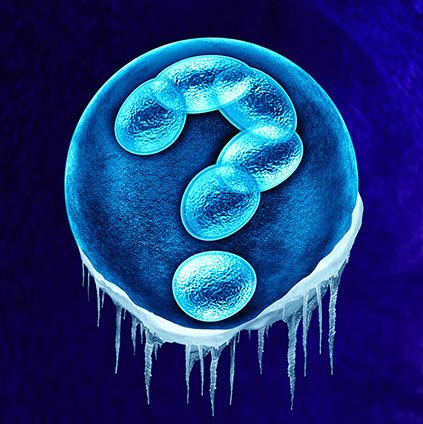
Frozen Embryo Transfer
Frozen Embryo Transfer
The frozen embryo transfer (FET) is a process in which cryopreserved or frozen embryos from a previous cycle are thawed and transferred back into the uterus in order to achieve a pregnancy.
Indications
- In IVF cycles, most often, fresh embryo transfer is done. We select the best quality embryos for transfer. The surplus good quality embryos are then frozen.
- In some women, the endometrium may be thin (less than 7mm). This is not the best thickness for attaining pregnancy. In such situations, we prefer to freeze the embryos and use them later in a frozen transfer cycles. This is done while measures are taken to get a better endometrium, aiming to improve the success rate.
- Occasionally, some women, particularly with PCOS, produce more number of eggs and are at higher risk of ovarian hyper stimulation syndrome (OHSS). In these women, doing an embryo transfer heightens the risk of severe OHSS. Thus, we freeze the embryos and use them at a later date when the risk is reduced.

During a FET cycle, a baseline ultrasound is performed when the patient gets her periods. If the scan looks normal, estrogen supplementation is started.
Estrogen supplementation helps in improving the endometrial lining. It is continued until we get a lining of 9 -10mm. Serial ultrasound scans are performed to check the endometrial lining. The monitoring during a FET cycle is significantly less than during a conventional IVF cycle. When the endometrial lining is good, progesterone support is added and embryo transfer is scheduled. The number of days of progesterone prior to transfer depends on the day of freezing of the embryos.
Success with fresh and frozen cycles is equally good. Some studies have shown that frozen embryo transfer can give a slightly better chance.